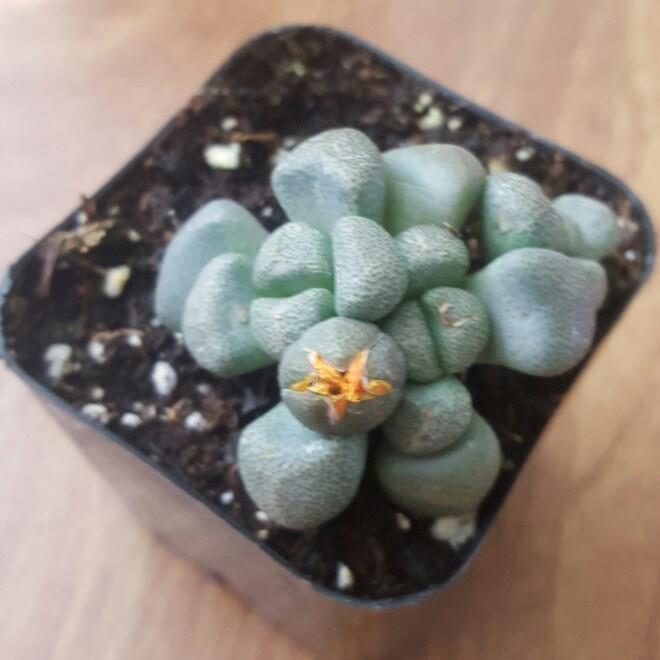
Aloinopsis schooneesii
Living Stone
Aloinopsis schooneesii is a species of succulent plant, native to Southern Africa. It is tuberous rooted and produces small rosettes forming dense mats. It is a winter grower with irregular rosettes of diamond shaped, dark green leaves. It bears yellowish bronze flowers at the end of winter, beginning of spring. They open in late afternoon or early evening.
Contributed by @candice2
-
Full sun
-
Very little water
-
Frost Hardy: 23F (-5°C)
-
Light and free draining
Common name
Living Stone
Latin name
Aloinopsis schooneesii
type
Succulent
family
Aizoaceae
ph
5.0 - 7.0 Acid - Neutral
Plant & bloom calendar
-
Best time to plant
full grown dimensions
 0.04 M
0.05 M
0.04 M
0.05 M
Aloinopsis schooneesii
Aloinopsis schooneesii is a species of succulent plant, native to Southern Africa. It is tuberous rooted and produces small rosettes forming dense mats. It is a winter grower with irregular rosettes of diamond shaped, dark green leaves. It bears yellowish bronze flowers at the end of winter, beginning of spring. They open in late afternoon or early evening.
Planting
From Early Spring TO Early Spring
Aloinopsis need good draining soil. When planting in the garden, make sure the area drains well and is not in a hollow that remains wet. Specially prepared cactus soil can be purchased for planting in pots or incorporate sand, gravel or volcanic rock for better drainage. The container you are planting in should have a drainage hole and it is wise to put crushed rock at the bottom before your planting medium. Aloinopsis have very large tuberous roots thus the choice of pot is crucial to allow the tuber to expand as the plant grows. It should be fairly deep, unlike most other succulent planters.
Propagation
From Early Spring TO Late Spring
It is easily propagated by the removal of offshoots in spring. To propagate by cuttings, remove a shoot and let it lie for about one week, giving the wound time to heal. Cuttings should first be allowed to dry and form a calous by placing them on a cool place for at least one week. The basal part should preferably be treated with a fungicide. Plant the cutting in an erect position in sandy soil. Rooting is rapid,and the plantlets can be planted out in small containers when they are large enough to handle.



























